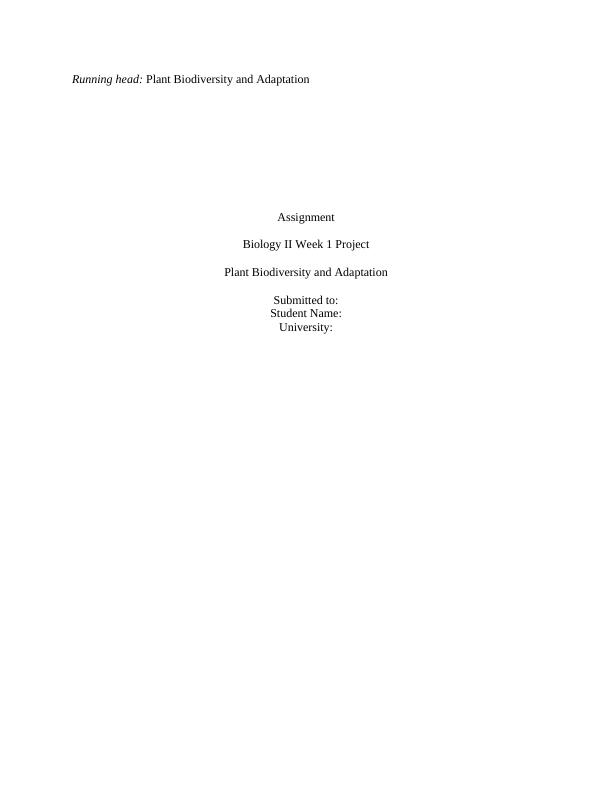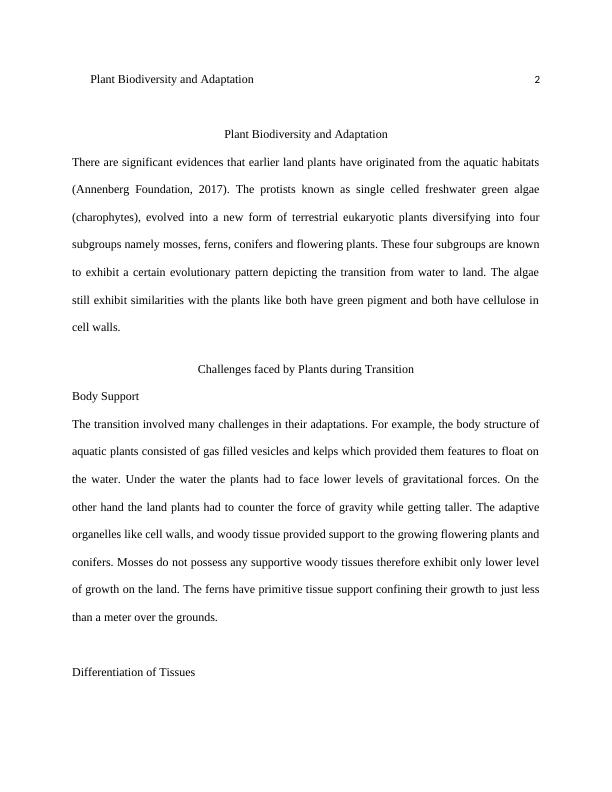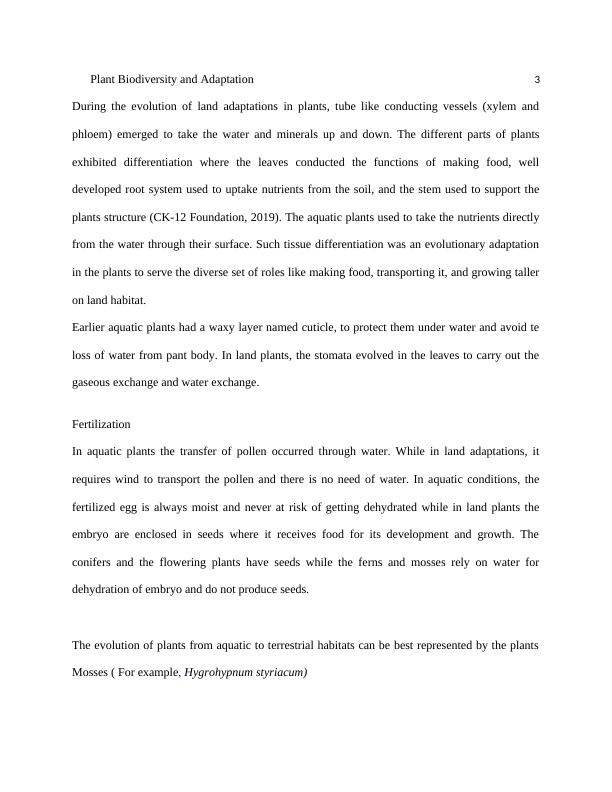Plant Biodiversity and Adaptation
7 Pages1462 Words203 Views
Added on 2023-04-21
About This Document
This document discusses the transition of plants from aquatic to terrestrial habitats and the challenges they faced during this process. It explores the role of natural selection in plant evolution and the advantages of life on land. The document also provides information on the different adaptations and characteristics of plants in various stages of evolution.
Plant Biodiversity and Adaptation
Added on 2023-04-21
ShareRelated Documents
End of preview
Want to access all the pages? Upload your documents or become a member.



